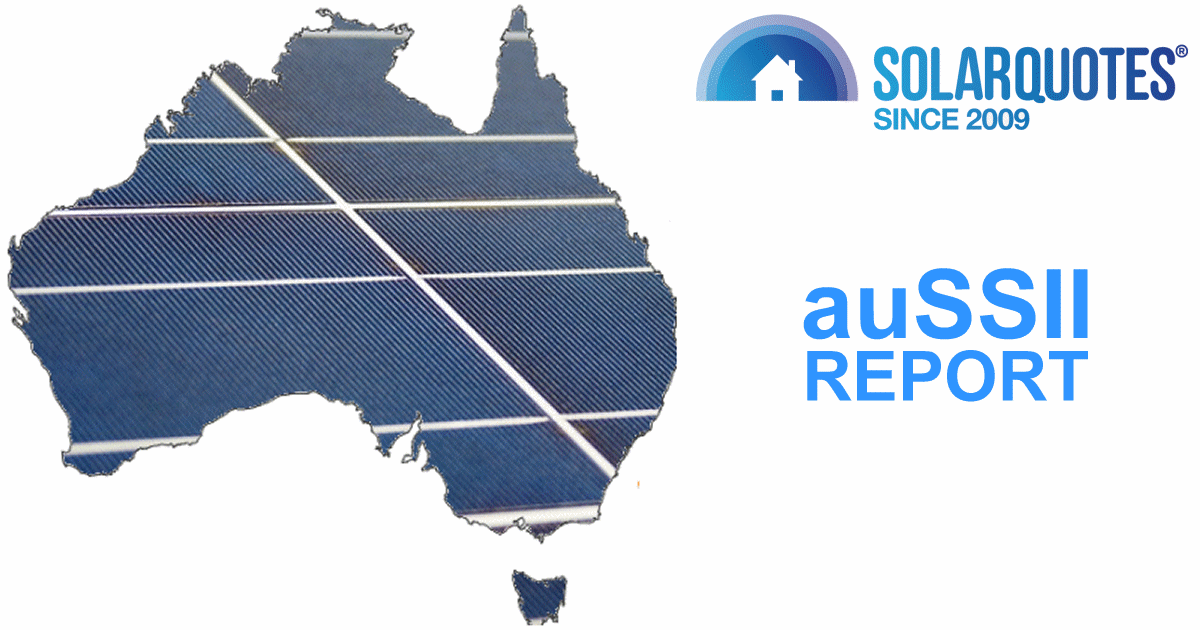
Discover what Australian buyers were wanting in a solar power system last month in the February 2022 auSSII report.
Solar System Capacity (Size)
Where one of the following options was selected during the SolarQuotes quoting process: 3 to 5 kW, 5 to 10 kW, 10 to 15 kW, 15 to 20 kW, 20+ kW and “Fill Roof”, close to 79% chose the 5 – 10kW range in January, similar to December. Interest in the 3 – 5kW range dropped again to around 2.5% compared to 4% in December.
There was a big increase in the proportion of Australians wanting to make the most of their rooftop real estate for generating solar energy, with close to 12% choosing the “Fill Roof” option – up on December’s 9%.
Unsure on system sizing? Discover how much solar power you’ll need; or leave it to an installer to advise what will provide you with the best bang for buck.
System Purchase Timeframe
The proportion of prospective solar power buyers wanting to purchase a system immediately dropped from 28% in December to around 24% in January 2022; more in line with November, October and September last year (25%).
The uptick in particularly eager buyers in December was probably due to the looming rebate reduction in January. But as the rebate level is tied to installation date rather than purchase date, many quotes would have been taking into account a January install anyway.
The good news is even with the reduction in the national subsidy that slashes the up-front cost of installing panels, it’s still very generous. Learn more about the solar rebate.
Price Vs. Quality
12% of Australians were wanting a “top quality” (most expensive) system option in January, the same level as the previous three months. There was an increase in interest in systems offering a good balance of cost and quality; around 81% compared to December’s ~79% and therefore a dip in interest in a good budget system, down to 7%
To get an idea of general pricing ranges for good quality systems of various capacities, visit our solar panels cost page.
Australian Solar Price Index
See what Australians are paying for systems on average – currently and historically – using the SolarQuotes Australian Solar Price Index. We’ll have a special report on average system costs and price per watt in January towards the end of this month.
Microinverter/Optimiser Interest
Again in January, 18% of Australians using the SolarQuotes service wanted more information about microinverters and optimisers. While adding to the cost of a system, these devices enable individual panel monitoring and may be helpful in some installation scenarios. Microinverters and optimisers are forms of PLO (Panel Level Optimisation).
Solar Energy Consumption Monitoring
Interest in advanced solar monitoring picked up again in January, up from December’s 37% to 39%. This popular optional extra can help you extract maximum value from your investment. Learn more about advanced solar monitoring
Battery Ready PV
A home battery can be retrofitted to any system, but we ask this question on the quoting form to give prospective installers a better idea if the customer is – at this point – considering adding energy storage down the track, as this can help inform system design.
Interest in battery-ready systems sat at around 5.5% in January (5% in December, 6% in November).
While few may be considering adding a battery in the future right now, they may change their minds as energy storage becomes cheaper. And there is a significant proportion of solar buyers considering a concurrent battery installation.
Solar + Storage Installation
As in December, around 18% of Australians using SQ’s service indicated they wanted a battery installed at the same time as their solar panels.
If you’re considering energy storage, be sure to read Finn’s “101” guides on understanding, buying and owning a home battery system that contain lots of useful advice and will help you to determine if a battery is right for you.
Intended Primary Battery Use
6% of requests in January including a battery installation indicated the primary application was for backup purposes (7% in December, ~6% in November, 5% in October). 34% want a battery mainly for minimising mains grid electricity consumption, same as December, and 60% for both purposes, up a touch on December.
Electricity Bills Pre-Panels
As for electricity costs prior to going solar, where noted, 46% reported bills between $500 and $1,000 a quarter – a fairly static figure. A touch over 11% were paying more than $1,000 a quarter compared to a bit under 11% in December and ~12% in November.
About The February auSSII Report
This month’s auSSII report was generated using details submitted by thousands of Australians who received up to 3 quotes each from trusted installers in the SolarQuotes network during January 2022.
Quality Leads For Installers Pursuing Excellence
Since 2009, SolarQuotes has been providing installers who care about their quality of work and customer service the details of eager Australian solar buyers. Learn more about what makes SQ’s solar sales leads a cut above the rest
Reproducing The auSSII Report
Information from this report can be used in your publication without formal permission – we only require you attribute SolarQuotes as the source and that this page is referenced.

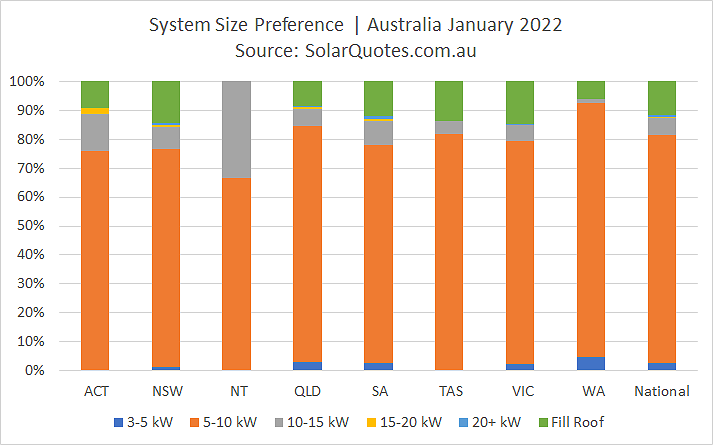
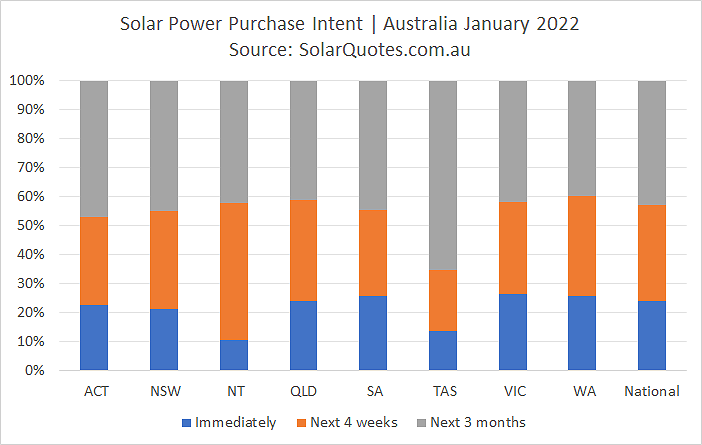
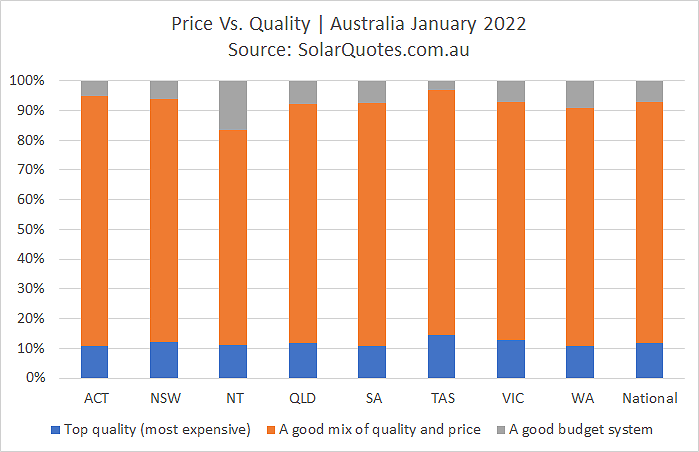
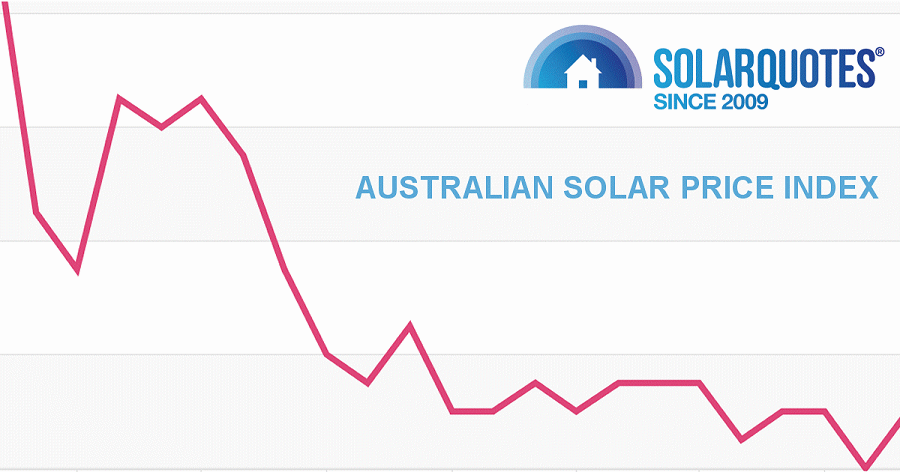
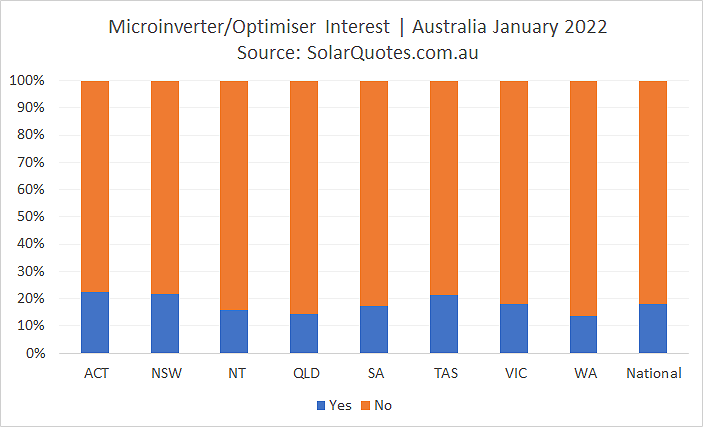
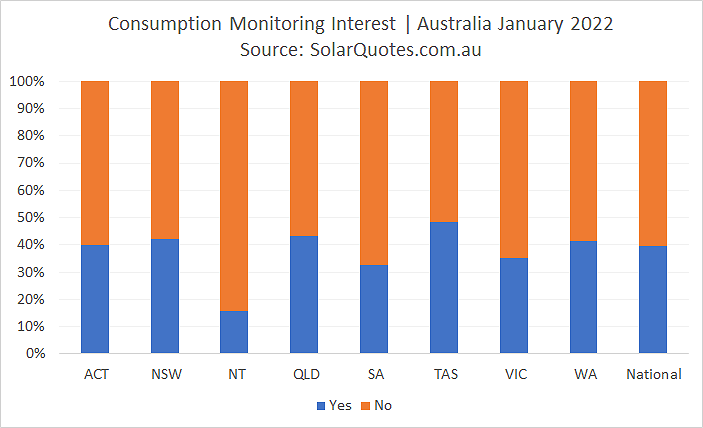
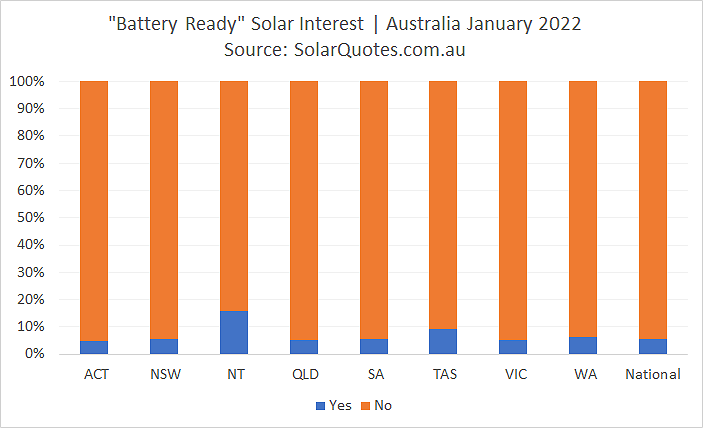
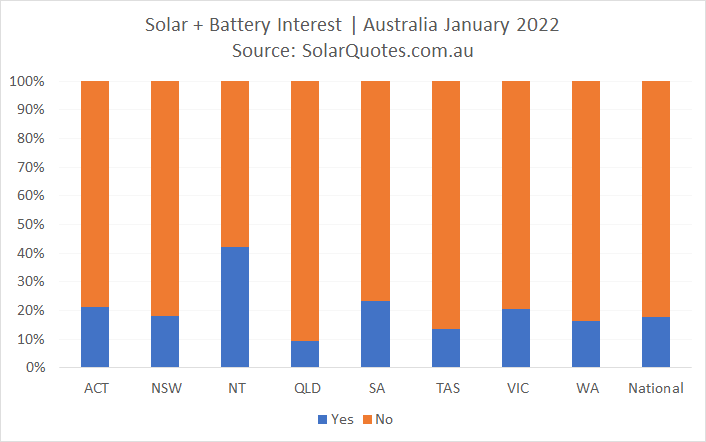
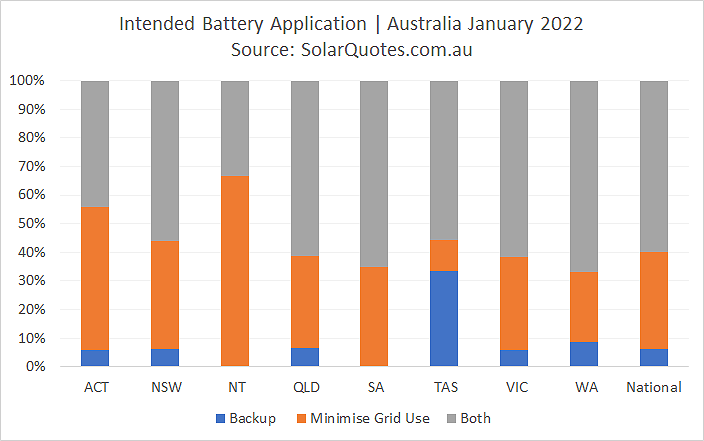
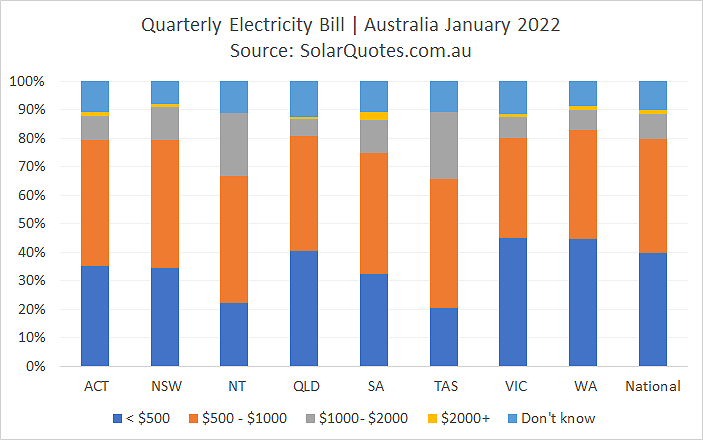
 RSS - Posts
RSS - Posts



There are two big issues not being properly addressed:
1. All battery systems should be able to be recharged from solar during a blackout.
2. All BEVs and PHEVs should have the ability to power the house at any time.
Why pay $10000 for a backup battery when you already own a car with a much bigger battery?
Battery, solar and battery-solar systems that can operate when the grid connected/in household solar curtailment mode are indeed preferable to entirely grid dependent ones.
Vehicles connected to dwellings should be included in the above principal. However, they still won`t power the dwelling when they are not connected to the dwelling. There are many dwellings in Australia that don`t have off-street parking, so are hard to connect to car batteries. There are many flats and units where the parking and dwelling are not connected and the car charging is likely to be separate from the dwelling electricity, making such connections harder. When a car is being driven, it won`t be connected to a dwelling. There are also households without cars at all.